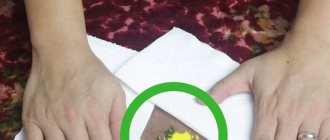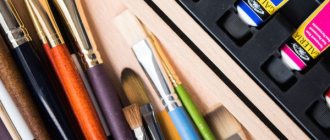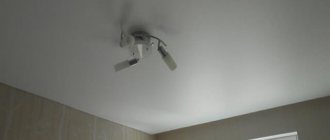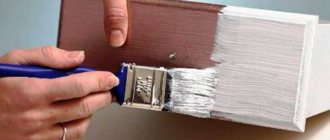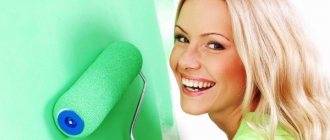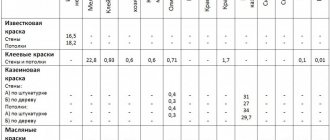Is it possible to paint wood with acrylic paint for radiators?
Features of acrylic
paints
It is ideal for painting wooden surfaces. ...Also, the paint
does not have a pungent odor.
you can
with it in public places. Another advantage of this material is quick drying (1-2 hours).
Interesting materials:
How to preserve a dead body? How to save PDF to Word? How to save a QR code on an iPhone? How to save text in notepad? How to save a house point in Minecraft? How to shorten paragraphs and subparagraphs? How do the median and the arithmetic mean relate to each other? How to write a resume by email? How to write an equation for a linear function from a graph? How to create an automatic bibliography?
Characteristics of gouache
Gouache is a water-soluble adhesive-based paint. It has a dense and matte structure due to the white in its composition. Often gouache becomes the second coating that an artist masters after watercolor.
It is intended for coloring the following materials:
The kaolin and white contained in the paint allow you to create dense layers without streaks or blurring of the base. With its help you can paint pictures in various techniques: watercolors, glazes, brush strokes. Errors can be easily corrected by using an additional layer: in this case, it is permissible to apply a lighter color to a dark one.
The finished coating has no shine, which makes the pattern soft and velvety. After drying, the painting takes on a whitish tint. The composition is prone to cracking with an impasto style of writing. Paintings painted in gouache must be protected from moisture, dust and direct sunlight.
Masking fluid
Masking fluid, or frisket, can be used on acrylic washes as well as watercolor washes. Make sure the liquid is completely dry before painting over it, and do not apply too much paint on it, otherwise you will have to peel off pieces of paint to remove it. This liquid can be used on both paper and canvas, but try it first to get the hang of it. If the masking fluid dries on the brush, it will be almost impossible to clean it off, so be careful.
Watercolor over dried or mostly dried acrylic
There are several ways to use watercolor over dried acrylic.
Ghostly images
You can create ghostly images by painting watercolor over dry acrylic. For example, in the image above, the heart was first painted in white acrylic on a sheet of Bristol board. It doesn't look like much until a watercolor wash is applied to the acrylic. If the acrylic dries completely, it will show up unevenly with the watercolor, giving you a mysterious look; if the acrylic is still a little wet, the watercolor will give it a ghostly fuzz around the edges. Either way, this effect can be used to create subtle looks.
Glaze acrylic painting
Glizal or glazing is a very interesting technique based on applying thin (almost transparent) paints on top of each other.
Glazing is a very interesting technique based on applying thin (almost transparent) paints on top of each other. Using a liquid gel medium is the best and easiest way to achieve a glaze effect. You can also thin acrylic paints with water, but they will be less vibrant and transparent than using a gel medium.
Start by choosing the color you want to cover the area of the painting. In this case we use green. Then mix the paint with a small amount of gel medium. And as soon as you get a homogeneous mixture, apply a glaze layer to your painting.
Watercolor or acrylic: which paint to choose for creativity?
What is the difference between watercolor and acrylic paints? What type of paints should I choose?
In my work I use watercolor and acrylic paints, I already have a little experience. It's time to compare these paints.
General - both types of paints are water-soluble.
What else? And, probably, that's all. There are significant differences between these types of paints, which I will introduce you to in this article.
Watercolor
- To work with watercolors, paper is usually used, and the result of the work largely depends on the quality, composition and structure of the paper.
- The paint is transparent, there are no covering opaque paints.
- Correcting errors is difficult, sometimes impossible.
- When applying a new layer of paint, the previous layer may blur.
- Exposure to water leads to erosion of the paint (the finished drawing must be protected from moisture).
- After drying it becomes lighter.
Acrylic
— Acrylic paints can be used to paint on various surfaces: paper, cardboard, canvas, wood, etc.
— Undiluted paint is dense and opaque. When diluted with water it becomes transparent.
— It’s very easy to correct mistakes: you can simply paint over the failed element and draw it again.
— After the bottom layer has dried, applying a new layer will not spoil the previous one.
— The paint dries very quickly. After complete drying, the paint forms a film that is not afraid of moisture (the finished painting can be wiped with a damp soft cloth). Brushes should be rinsed well immediately after use, before the paint dries.
— After drying it gets darker.
Which paint to choose?
As you already understand, acrylic and watercolor are completely different paints. But each of them is good in its own way. My choice of paint for a particular painting depends on the composition, the result I want to get, and simply on my mood. When I want transparency and airiness, of course, I choose watercolor. Well, if you want to get a painting on canvas, I choose acrylic (as I wrote above, acrylic paints can be used on various surfaces, but I usually use ready-made primed canvases on a stretcher).
There are many mixed media techniques that use watercolor and acrylic together.
In particular, acrylic can be used to correct mistakes in a watercolor drawing. For example, when painting snow on the Christmas trees, I forgot to leave the light areas. White acrylic helped correct this mistake.
Acrylic over wet watercolor
By painting with acrylic over still-wet watercolor, you can get some very beautiful, stunning results. For example, in the image above, white acrylic paint is applied over stationary wet blue watercolor paint. Because the watercolor is still very wet, the color blends neatly with the white acrylic paint, giving it a translucent appearance, less flat than simply painting white clouds over the dried surface of the watercolors, which will be dry opaque.
Is it possible to tint PF 115 Enamel?
If we take for example the very popular and inexpensive enamel PF 115
-b, then after reading its characteristics it becomes clear that the paint is perfectly compatible with colors, that is,
be tinted
and
you can
choose absolutely any color that you need.
Interesting materials:
Is it possible to cook potatoes, carrots and beets together? Is it possible to cook potatoes, beets and carrots together? Is it possible to cook porridge with milk mixture? Is it possible to cook smoked ribs? Is it possible to boil cinnamon? Can you cook chicken in hot water? Is it possible to cook semolina porridge with milk mixture? Is it possible to cook meat in hot water? Is it possible to boil pink salmon milk? Is it possible to cook peeled beets?
What is the difference between gouache and acrylic
Beginning artists are recommended to first master the technique of painting with gouache and only after that move on to acrylic paints, which are a tool for the work of professionals. The difference between these two compositions lies in several parameters.
Acrylic is less viscous, dense and easier to apply to the canvas. But it dries quickly and requires dilution with water at low speed. The pigment in it is more concentrated, which reduces material consumption. After drying, acrylic paints darken, while gouache takes on a lighter shade.
Another difference between acrylic and gouache is that it is not subsequently washed away by water. Dried acrylic paint cannot be washed off from the canvas, brushes, or palette. The gouache material mixed on the palette can be reused if you add water to it . This technique does not work with acrylic.
What you need for drawing
Making your own paint is not difficult at all. First of all, you need inspiration and desire. And everything else is the most ordinary things:
- palette or board for diluting paints;
- canvas or other material for drawing;
- PVA glue;
- the simplest set of gouache (6 or 12 colors are enough);
- brushes (preferably flat);
- a napkin for wiping brushes.
Is it possible to use gouache instead of Kohler?
You can completely use gouache to tint the paint. There are dyes that can be used both for preparing paint and as paint itself (essentially the same gouache).
Interesting materials:
Who is exempt from repeated instruction? Who is exempt from using CCT? Who is exempt from undergoing initial training? Who is exempt from paying land rent? Who is exempt from cash registers? Who is exempt from CCT? Who is exempt from using CCP 2022? Who is exempt from paying? Who is covered by household services? Who are the officials of the organization?
Applying paint to a previously dried liquid layer
It is best to use this technique when the previous liquid coat of paint has already dried. Fill your brush with paint (we're using dark purple) and paint a shape on the previously dried orange layer.
You've probably seen that acrylic paints are incredibly easy to use and are a good alternative to oil paints. In addition, they are odorless and can be washed off hands without the use of solvents.
How to create soft transitions between colors
The wet-on-wet method is the best way to achieve a smooth transition
Creating soft transitions (blending) is one of the most difficult acrylic painting techniques. First apply a layer of white paint, then use a filbert brush to add color underneath (we're using blue). Next, make quick movements left and right, moving the brush until you get a smooth transition from blue to white. The wet on wet method is the best way to achieve a smooth transition. You can also get a smooth transition on a dry surface. To do this, you need to apply the color, let it dry and then apply another color with a dry brush.
Watercolor background, acrylic background
Watercolor and acrylic can be used in tandem to create three-dimensional works of art. You can create a fluid, colorful background in watercolor and then use opaque acrylic to paint the shapes that appear on top of the watercolor. From simple icons like a heart painted in white acrylic against a watercolor rainbow background (pictured below), to more complex scenes with characters painted in acrylic against a beautiful background, it's an easy way to get a less "flat" effect by combining media.


